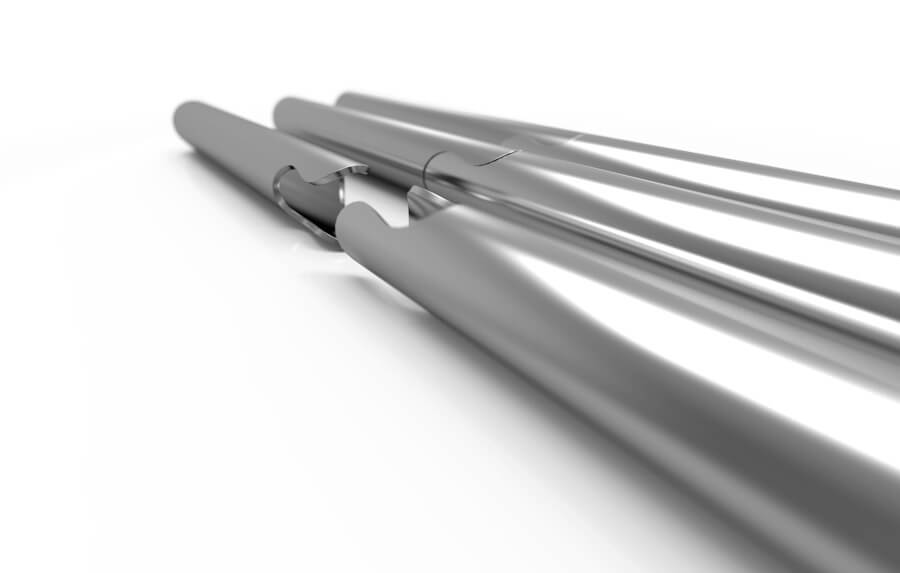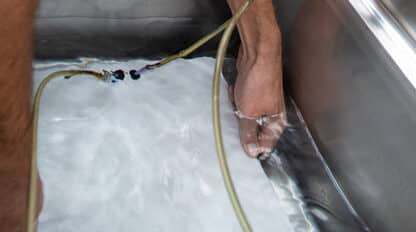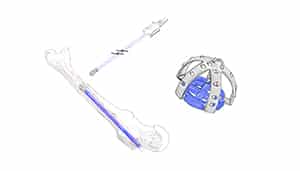What’s next for nitinol tubing?

By Nancy Crotti
Mark Broadley contributed his expertise to this article and is a metals and tube applications expert at Viant.
This article originally appeared in Medical Design & Outsourcing
Nitinol has revolutionized the medical device industry. With its flexible superelasticity, shape memory and biocompatibility, nitinol has become a go-to material for medical devices.
But this nickel/titanium alloy is not without its downsides. First, it’s relatively costly. So while an all-nitinol device may meet performance requirements, it may not be practical from a cost standpoint. As a result, medical device designers might specify nitinol for a specific component that needs flexibility, and spec another material, such as stainless steel, for adjoining components.
But that’s the second downside: Nitinol is difficult to solder or weld, both to itself and to other materials. Currently, if you want to weld nitinol to stainless steel, you need an intermediate component of an alternate material that is compatible with both materials. For simpler product forms like wire, this may be a cost-effective approach. But for more complex product forms like tubing, the cost and lead time for the intermediate component, as well as the more complex tube-welding method, make this approach less attractive.
Novel joining technique
At Viant, we’ve developed a novel technique (patent pending) to mechanically join nitinol to other laser-cut metals — commonly, stainless steel.
Let’s start with an analogy. As a kid, did you ever play with a small cylinder of brightly colored, woven bamboo called a “Chinese finger trap?” You put your index fingers in each end of the cylinder, and when you try to pull them out, it only tightens the trap. (You escape the trap by pushing the ends toward the middle, which enlarges the ends and releases your fingers.)
The same principle is at work in this puzzle-cut tube-joining technique. We cut a number of lobes around the circumference of the end of the nitinol tube, and cut lobes of a complementary size and geometry around the end of the stainless steel tube. When we push the nitinol lobes into the spaces between the corresponding stainless steel lobes, the nitinol lobes spring back to their previous shape to mechanically engage and lock the joint, like connecting interlocking puzzle pieces, or like the finger trap holds your fingers. It’s quick and easy to assemble, with a satisfying snap.
The benefits? First, you save cost by limiting the nitinol in your design to only the components that rely on its performance characteristics. Second, you eliminate the cost of the intermediate component, as well as the laser welding and the associated verification process, which mitigates risk. And third, you’re joining tubes of different materials together without a containment sheath or aligning wires. This allows a low-profile connection that doesn’t obstruct the inner lumen so that it can accommodate a wire for additional device functionality.
In terms of technical considerations, it’s critical that the nitinol tubing has uniform wall thickness to avoid “whipping” when being rotated while bent. We perform 100% ultrasonic inspection of nitinol tubing to ensure uniform wall thickness around the circumference. In addition, welded stainless steel tubing is cold-worked and annealed during the manufacturing process to ensure homogenous dimensional and mechanical properties around the circumference.
Material strength is also a design consideration. If a joint is designed for tensile loading, it’s important to have enough strength in the tube to withstand the load in both the nitinol and stainless steel lobes. This can be evaluated by performing an FEA analysis on a designed component and confirmed by functional device testing to ensure it meets mechanical requirements.
Applications
When we were developing this technology, we had been working with a customer on a robotic-assisted, wristed endoscopic device. The design involved a nitinol actuator that transmits motion from a robotic device through the wrist to tools used to operate. When we priced out a nitinol actuation system, the cost was prohibitive due to the high cost of the long nitinol actuation tube. So we thought that if we could join nitinol with another material that’s more cost effective, like stainless steel, while retaining the nitinol only at the wrist, we could save costs. We estimate that using this puzzle-cut joining technique would have reduced the cost of the device by 30%.
This technique could also be used for devices that need flexure but also need tension or torsion actuation through a flexing location, for orthopedic drives that require going around corners, or for a flexible drive that can transmit torque. Another application is catheter-based products that have a flexible section to enable the user to articulate around a bend or a curve. Limiting nitinol to just the section that needs flexibility — rather than using it for the entire length of the device — saves costs.
Our initial development of this mechanical joint has focused on a basic symmetric lobe design, consistent with a push-together assembly method, cut into thin-walled tubing. Alternate lobe designs with tilting lobe geometries, consistent with a push-and-twist assembly, may allow the joint to transmit more torque in a preferred direction. Alternate tube designs with thicker walls will increase the strength of the joint under tension and torque as well as forces that would tend to misalign the joint.
Mark Broadley is product solutions director at Viant. He provides technical support for company operations and commercial teams in metals and tube applications.
Interested in trying out our nitinol tubing? A selection is available for purchase online at Chamfr.com


